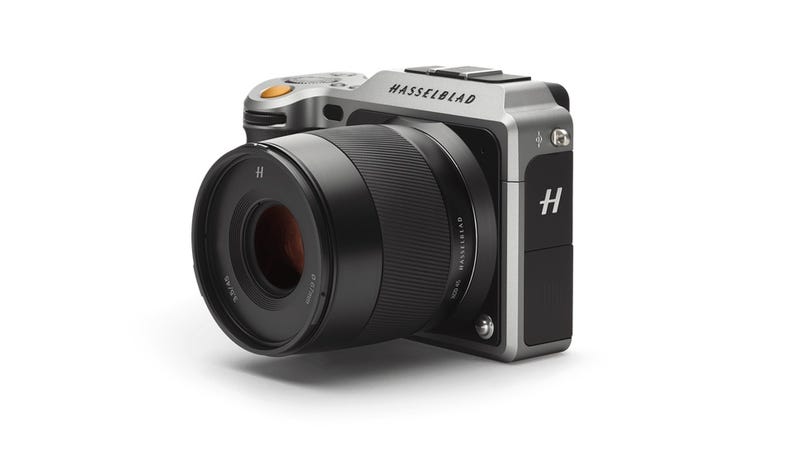
The 50-megapixel X1D has about the same resolution as Canon's 5Ds, but can theoretically gather more light thanks to the medium-format sensor. That also gives it a shallower depth of field, but unfortunately, that's limited by the current lens selection (more on that shortly).
The X1D uses a leaf shutter with 1/2000th of a second max speed, which sounds slow, but is faster than other medium-format cameras. You can sync a flash to any shutter speed, rather than being limited like most DSLRs -- a key feature for portrait shooters. A recent firmware update introduced an electronic shutter, which reduces vibration and allows up to 1/10,000th of a second speeds.
There's a pair of physical dials to adjust shutter speed and aperture, a mode selector dial, an ISO/white balance button, and a manual/autofocus button. The rear 3.0-inch TFT touchscreen, while a bit laggy, has nice image quality. It lets you set the camera's controls via an intuitive menu system that puts more established mirrorless camera makers (ahem, Sony) to shame. The electronic 2.36-megapixel viewfinder (EVF) is bright and clear.
Hasselblad only gave me one lens with the X1D, the f/3.5 45mm prime, equivalent to about 35mm and f/2.9 (for depth of field) on a full-frame camera. The lens produces some vignetting (correctable by Hasselblad's Phocus software) but is otherwise sharp.
The lens was a bit slow and had less depth of field than I want for low-light urban shooting. Hasselblad has three other lenses for the X1D -- the XCD 30mm f/3.5, 90mm f/3.2 and 120mm f/3.5, but nothing faster yet. It also has three more coming, including a zoom and macro, but has yet to release the full specs. For now, the extreme depth-of-field and low-light potential of its medium-format sensor is hampered by the available lenses.
Taking $11,290 worth of camera equipment (including the lens) into Paris was nerve-racking, but I got used to it quickly. It's simply a wonderful camera to carry around -- it weighs a less than my Canon 7D and the rubberized grip is fantastic.
The startup time is around 11 seconds, which is, frankly, terrible. If you want to be spontaneous, you can reduce that by putting it into sleep mode, but that drains the battery quicker. And battery life is not great to begin with -- after four or so hours of intense shooting, it died on me. The camera also gets quite hot after extensive use.
I usually stress about learning settings on new cameras, but I was quickly shooting on the X1D with no issues. The main controls (aperture, shutter speed, ISO and white balance) are handled by the dials and buttons, and everything else can be accessed quickly on the responsive touchscreen.
You can shoot at 3 fps, reasonable for a camera that produces 105MB images, but far from Canon, Nikon and Sony full-frame models (it's comparable to Fujifilm's GFX 50S, but the latter camera starts much quicker). The LCD/EVF blacks out for about a second while shooting, and the leaf shutter makes two dramatic clicking sounds, once to take the image, and again to reset. That means it might not be appropriate at sensitive events unless you use the quieter electronic shutter.

No comments:
Post a Comment